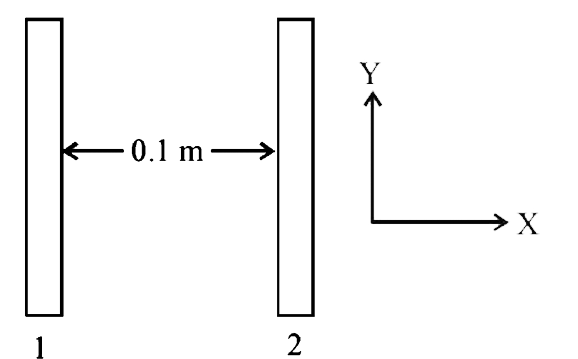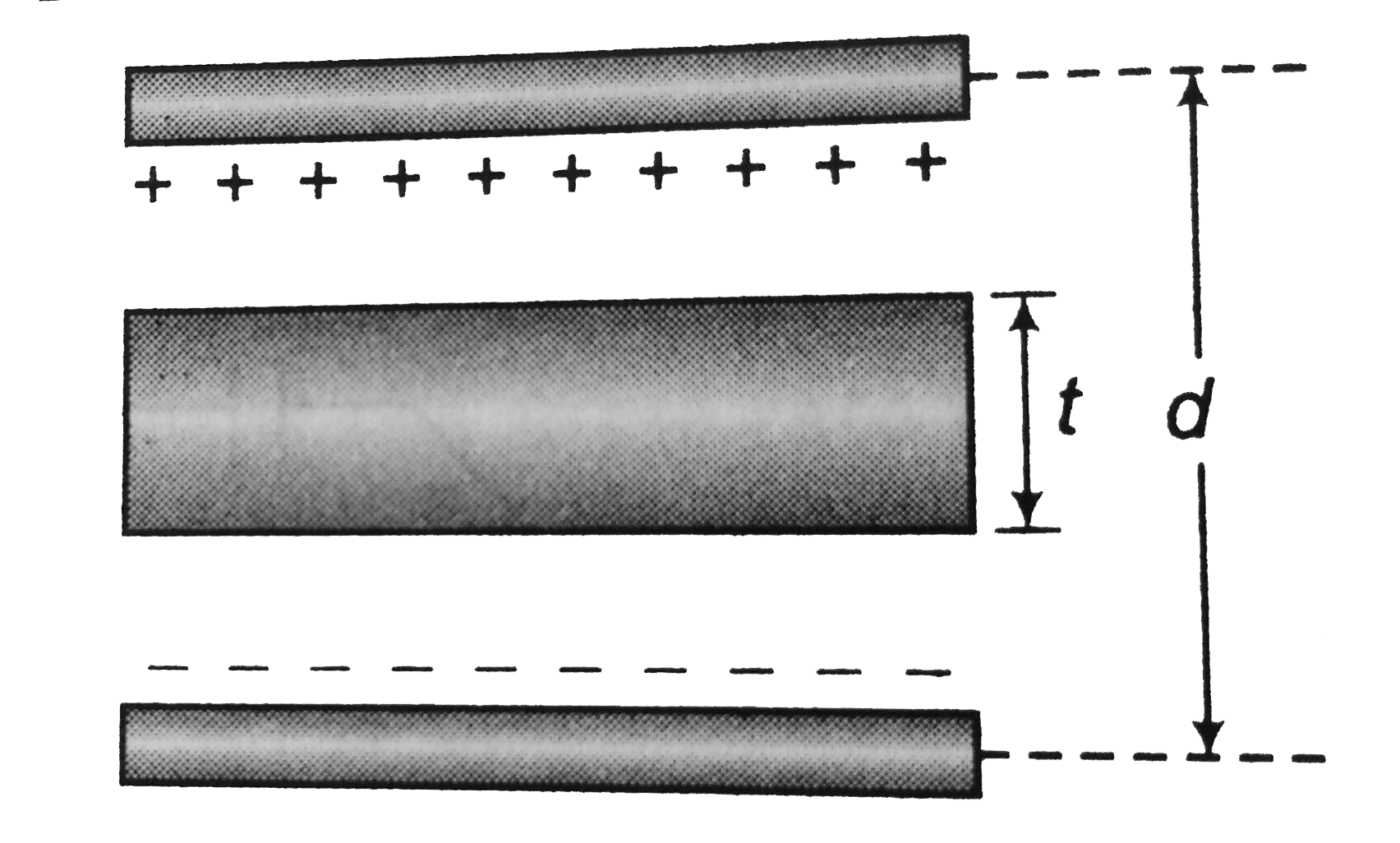The electric potential difference between two parallel plates is 2000V. If the plates are separated by 2 mm, then what is the magnitude of electrostatic force on a charge of 4×10−6C located midway between the plates ?
4 N
6 N
8 N
1.5×10−6N
The correct Answer is:A
To solve the problem, we need to find the magnitude of the electrostatic force on a charge located midway between two parallel plates with a given potential difference and separation distance.
1. Identify Given Values:
- Electric potential difference (V) = 2000 V
- Separation between the plates (d) = 2 mm = 2 x 10^(-3) m
- Charge (q) = 4 x 10^(-6) C
2. Calculate the Electric Field (E):
The electric field (E) between two parallel plates can be calculated using the formula:
E=Vd
Substituting the given values:
E=2000V2×10−3m=20000.002=106N/C
3. Calculate the Electrostatic Force (F):
The electrostatic force (F) on a charge in an electric field is given by:
F=q⋅E
Substituting the values we have:
F=4×10−6C×106N/C=4N
4. Conclusion:
The magnitude of the electrostatic force on the charge located midway between the plates is:
F=4N
Final Answer:
The magnitude of the electrostatic force on the charge is 4 N.
---
- Electric potential difference (V) = 2000 V
- Separation between the plates (d) = 2 mm = 2 x 10^(-3) m
- Charge (q) = 4 x 10^(-6) C
The electric field (E) between two parallel plates can be calculated using the formula:
E=Vd
Substituting the given values:
E=2000V2×10−3m=20000.002=106N/C
The electrostatic force (F) on a charge in an electric field is given by:
F=q⋅E
Substituting the values we have:
F=4×10−6C×106N/C=4N
The magnitude of the electrostatic force on the charge located midway between the plates is:
F=4N
The magnitude of the electrostatic force on the charge is 4 N.
Topper's Solved these Questions
- ELECTROSTATIC POTENTIAL AND CAPACITORSBOOK - DC PANDEY ENGLISHCHAPTER - ELECTROSTATIC POTENTIAL AND CAPACITORSEXERCISE - (B) Chapter exercises
17 Videos
- ELECTROSTATIC POTENTIAL AND CAPACITORSBOOK - DC PANDEY ENGLISHCHAPTER - ELECTROSTATIC POTENTIAL AND CAPACITORSEXERCISE - (C) Chapter exercises
50 Videos
- ELECTROSTATIC POTENTIAL AND CAPACITORSBOOK - DC PANDEY ENGLISHCHAPTER - ELECTROSTATIC POTENTIAL AND CAPACITORSEXERCISE - Check point 2.5
20 Videos
- ELECTROMAGNETIC WAVESBOOK - DC PANDEY ENGLISHCHAPTER - ELECTROMAGNETIC WAVESEXERCISE - Sec C
22 Videos
- ELECTROSTATICSBOOK - DC PANDEY ENGLISHCHAPTER - ELECTROSTATICSEXERCISE - Medical entrances gallery
37 Videos
Similar Questions
A parallel -plate capacitor is connected to a battery that maintains a constant potential difference V between the plates. If the plates are pulled away from each other, increasing their separation, does the magnitude of the charge on the plates (a) increase, (b) decrease, or (c ) remain the same ?
View SolutionA parallel plate capacitor is constructed with plates of area 0.0280m2 and separation 0.550mm. Find the magnitude of the charge on each plate of this capacitor when the potential between the plates is 20.1V

View SolutionTwo insulting plates are both uniformly charged in such a way that the potential difference between them is V2−V1=20V. (i.e., plate 2 is at a higher potential). The plates are separated by d=0.1m and can be treated as infinity large. An electron is released from rest on the inner surface of plate 1. What is its speed when it hits plate 2? (e=1.6×10−19C, me=9.11×10−31kg)

View SolutionA parallel plate capacitor of plate area A and plate separation d is charged to potential difference V and then the battery is disconnected. A slab of dielectric constant K is then inserted between the plates of the capacitor so as to fill the space between the plates. If Q, E and W denote respectively, the magnitude of charge on each plate, the electric field between the plates (after the slab is inserted), and work done on the system, in question, in the process of inserting the slab, then
View SolutionThe parallel plate capacitor has potential difference of 100 V and separation between the plate is 1 mm. An electron is projected along x axis in between the plates. If the electron comes out of the plates along the x axis undevated then the magnitude and direction of magnetic field that must be applied between the plates : (particle is projected with a velocity of 105m/s along x axis)

View SolutionThe electrostatic force between the metal plate of an isolated parallel plate capacitor C having charge Q and area A, is
View SolutionThe electrostatic force between the metal plate of an isolated parallel plate capacitro C having charge Q and area A, is
View SolutionFigure shows a parallel plate capacitor with plate area A and plate separation d. A potential difference is being applied between the plates. The battery is then disconnected and a dielectric slab of dieletric constant K is placed in between the plates of the capacitor as shown.

The electric field in the gaps between the plates and the electric slab will be
View SolutionThe capacitance of a parallel plate capacitor is 400 picofarad and its plates are separated by 2 mm of air
( i) What will be the energy when it is charged to 1500 volts ?
(ii) What will be the potential difference with the same charge if separation is doubled ?
(iii) How much energy is need to double the distance between its plates ?
View SolutionFigue shows a parallel plate capacitor with plate area A and plate separation d. A potential difference is being applied between the plates. The battery is then disconnected and a dielectric slab of dieletric constant K is placed in between the plates of the capacitor as shown.

The electric field in the dielectric slab is
View Solution
